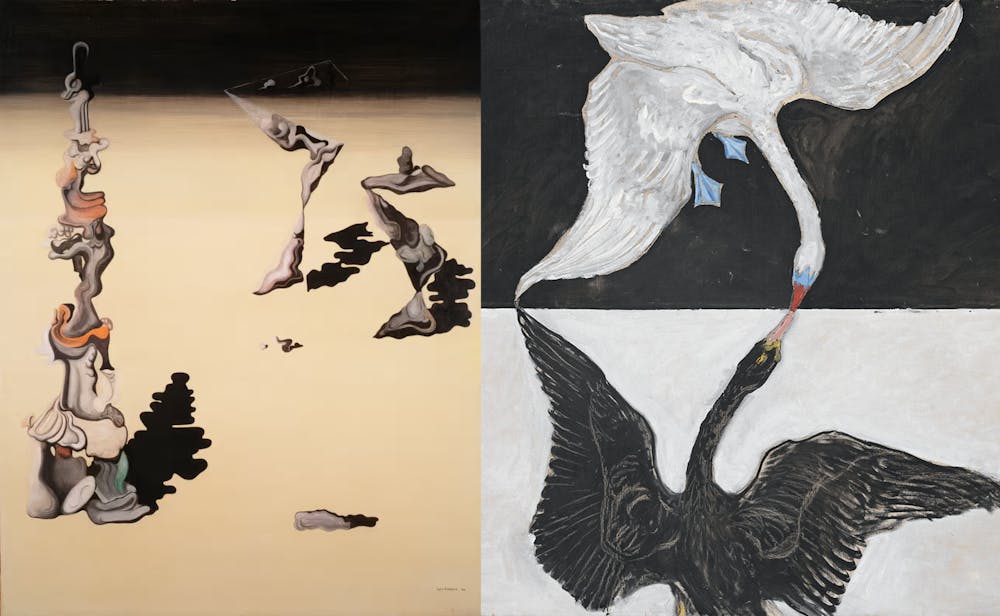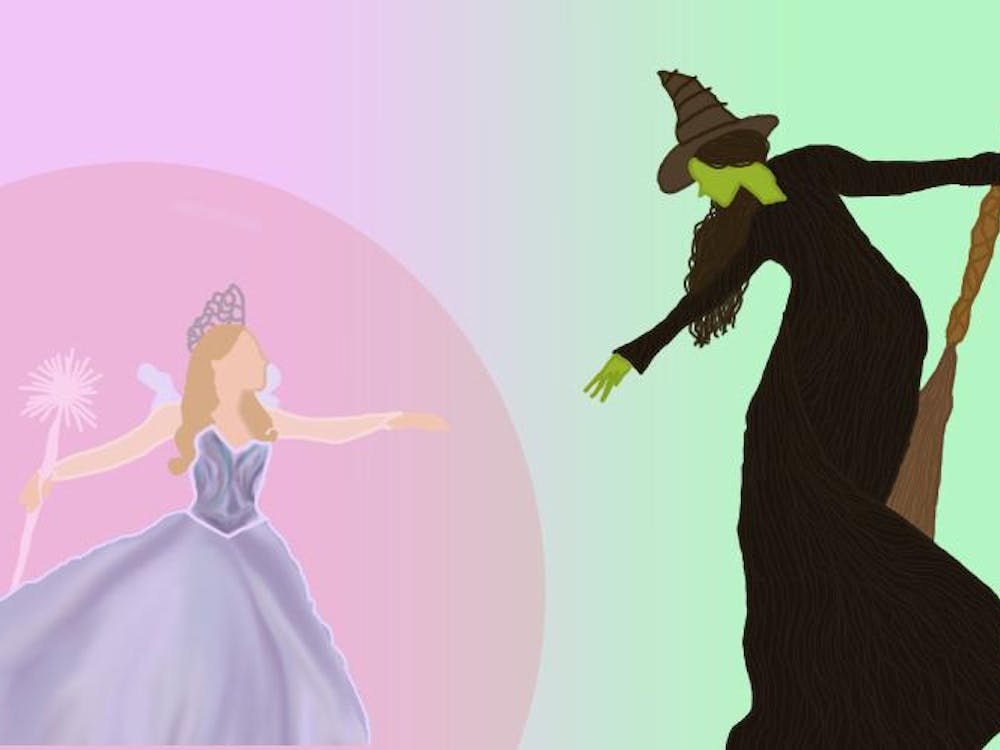Hilma af Klint’s 1915 oil painting “The Swan, No.1” captures imagery of two swans on two separate sides of the same canvas. Few would mention, let alone accept the idea of math being applicable to something as renowned as this work of art. However, Dr. Jiajun Yan — professor in the Department of Mathematics at the University — argues that Klint’s entire piece is executed on the principle of mathematics.
This is exactly the figment of exploration Yan covers in her EGMT 1510 course, “In Sync,” a quarterly seminar-style course taken by first-year students. Exploring mathematically what it means to be beautiful, Yan’s Engaging Aesthetics course focuses on the context between two distinctly different fields to explain how one brings the other to life.
Yan argues that the symmetry of both swans and their positioning to create the even balance of two distinctive sides on the same axis symbolizes the perfect envisionment of artistry and mathematics coming together to bring an audience art.
Jenny Calderon, former student in the course and first-year College student, conducted her final project on the perceptions of Yves Tanguy’s surrealist artwork, “Fraud in the Garden,” through the symmetrical reflection of palindrome poetry.
“The main thing I took from this course is just keep an open mind,” Calderon said. “Keep a very open mind. Maybe it doesn’t matter to you specifically, but it’s still good to appreciate it. It’s still [beneficial] to have a good understanding of how it affects your daily life.”
By using principles of mathematics like symmetry or even more advanced topics such as group theory and quotient spaces, Yan said she believes mathematical concepts aid in understanding the aesthetic notions that go behind formulating the overall presentation of a piece.
“By connecting math and art, I think math can provide insight about what beauty really is and help us have a deeper understanding of aesthetics,” said Yan.
Touching on the complexity of quotient spaces within her own final project, Lauren Mari Rylander — former class member and first-year College student — commented on her change of perspective after taking the class.
“I am a musician,” said Rylander. “Marching band, I feel like that’s the greatest example of math. That’s the most symmetric you can get, [having] all of these formations on the field and the music. I certainly have a better view of how math can exhibit itself in the daily existence”
As one could imagine from the thousands of years of accumulation of art from literature, visuals, music and entertainment, Klint’s piece is not the only example of finding and using mathematics artistically. Other broader categories like the rhyming of poetry are explained using mathematical concepts in the class as well.
Yan argues the number of syllables influence the way in which poetry is read, further connecting to the auditory senses of hearing poetry out loud and finding a course of artistic rhythm. Even when listening to music, Yan said it is not uncommon to find one’s walking synchronizing with the beat of the music, the movement of our limbs matching the composure of evenly spaced fractions of notes and rests.
According to Yan it is difficult to embrace such an idea for those who are not quite ready to welcome such a “self-contained” and “independent” field of study into the “sedative” nature of art.
“[Math has] developed its own very distinct type of language terminology,” Yan said. “So then, if you sort of delve into the realm of math, then you have like a whole universe to explore…You don’t necessarily have to appeal to other fields in order to study math.”
Yan strongly believes that it is math’s complexity and abstract nature that usually repels others. In response to such, appealing to artists is an ideal method to “explore the beauty of math to make it more accessible to the general audience.”
The “In Sync” Engagements course encourages students to think in an interdisciplinary fashion, uniting two fields at opposite ends in the spectrum of objectivity and subjectivity.







